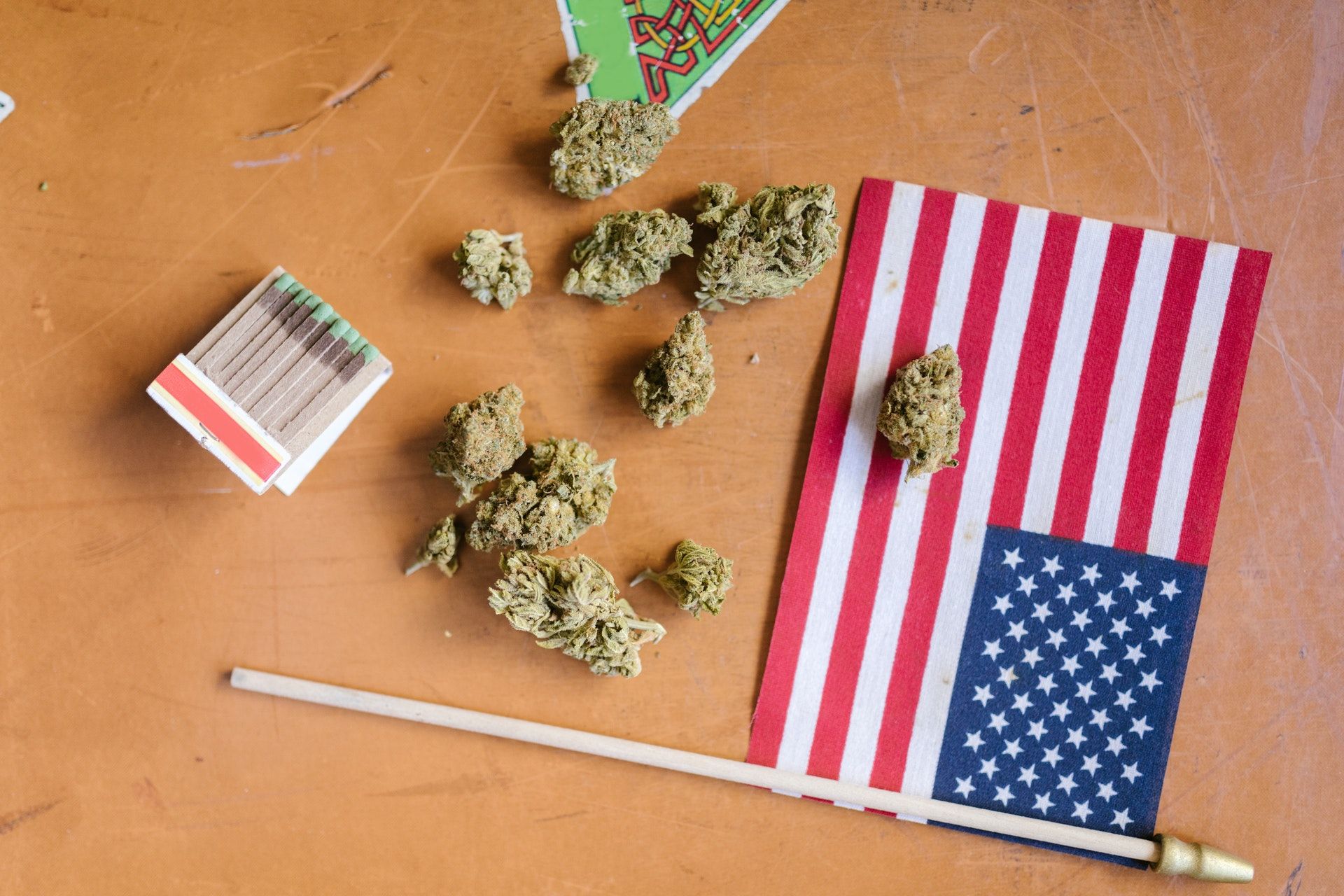A Brief History of American Hemp
Historians agree that cannabis/ hemp was as a crucial part of American history. In this article, HashDash covers a brief history of hemp in America, and how the plant helped shape the young country.

As the American Independence Day weekend has ended, HashDash looks back on the cannabis/ hemp plant as a crucial part of that history. In this article, we cover a brief history of hemp in America, and how the plant helped shape this young country.
Hemp Has a Long World History
Of course, hemp has been cultivated for its fibers for cloth and textiles for thousands of years. In fact, Archaeologists have discovered a relic of cloth made from hemp around the area of ancient Mesopotamia which dates back to circa 8,000 BC.
In the Middle Ages, hemp was a vital crop to aristocrats and peasants alike as the main source of fiber and an important food source, as hemp seeds can be very nutritious. For thousands of years, the world’s strongest Navies relied on materials like oakum, canvas, and hemp rope to sail the oceans safely. These three materials are durable, strong, and resistant to salt water.
Hemp in America
During the relatively short history of the United States as a nation, an argument could be made that it wouldn't exist as it is without the vast uses and applications of the hemp plant. Before 1937, hemp was so widely needed and used that laws were enacted requiring farmers to grow the plant.
When the ‘Marihuana’ Tax Act was enacted in 1937, American hemp production declined greatly, and almost came to a stop entirely. But from the moment the colonists landed on American shores until 1937, hemp was woven into the fibers of the American spirit.
A Brief American Hemp History
Before 1937, all of the cannabis laws in the U.S. actually ordered farmers to grow hemp. The first of which was in 1619, which of course long predates the Revolutionary War. Farmers in Jamestown Colony, Virginia were ordered to grow hemp in 1619, and the same is true for the Massachusetts and Contictuet colonies, in 1631 and 1632, respectively.
In the thriving Chesapeake Colonies in the mid-1700s, more mandatory hemp cultivation laws were implemented. In many parts of what is now both North and South America hemp seeds were accepted as legal tender from circa the 1630s until the early 1800s. Americans could even pay their taxes with hemp in many parts of America up until the early 1800s.
Historians liken hemp seeds to that of a Roman soldier being paid in salt, thus the phrase “worth your salt.” We feel that it’s time to introduce “worth your hemp” into our American vernacular. Hemp was so vital to our fledgling nation that farmers could be arrested and imprisoned for not growing the plant during shortages. One of the most prominent examples of which was in Virginia between 1763 and 1767.
Until the 1820s in the U.S., and for a century after that in the rest of the world, hemp was used in many different products. These included over ¾ of all textiles and fabrics for clothing, as well as bed sheets, military tents, rugs, drapes, towels, quilts, and more. Even the first American Flag, “Old Glory” was made mostly from hemp fibers and stitched by Betsy Ross.
American Hemp: Quick Historical Facts
- First U.S. Treasury Secretary Alexander Hamilton wrote about hemp in a Treasury notice in the 1790s: Flax and Hemp: Manufacturers of these articles have so much affinity to each other, and they are so often blended, that they may with advantage be considered in conjunction.” This encouraged flax farmers to grow hemp in conjunction.
- Pioneers in covered wagons in the late 1800s owe their sturdiness to the strong fibers of hemp canvas tarpaulins.
- The majority of ship sails and ropes were made mostly from hemp up until the mid-1900s.
- The original Levi jeans were made out of hemp sailcloth and rivets, for gold rushers in California circa 1849. The pants were advertised as having the strongest pockets that wouldn’t tear after being filled with (hopefully) gold nuggets and plenty of sediment.
- The first draft of the Declaration of Independence (June 28, 1776) was written on hemp paper, and so was the second draft completed on July 2, 1776. This was the document agreed to on that day, which was then famously announced and released on July 4, 1776.
- Hemp was so crucial in many American war efforts, even up to the time of its prohibition in the 1930s. A U.S. military film was released during WWII, called “Hemp for Victory,” which outlined all the ways the plant was vital to military success.
What's in a City Name? (Hemp-Based American Geography)
If you need any more convincing that hemp is a crucial part of America, just take a look at a few of the names of cities and towns.
- Hempstead, Long Island
- Hempstead County, Arkansas
- Hempstead, Texas
- Hemphill, North Carolina
- Hempfield, Pennsylvania
This is just to name a few. There are dozens of others, all named after cannabis growing regions, or after family names derived from hemp growing.
American Hemp: A Ressurrange of Hemp-Derived Cannabinoids
As you can see, hemp was a crucial part of the United States, and still is to this day. Hemp for Victory and other pro-cannabis films and books were practically banned for decades as the prohibition, propaganda, and eventual demonization of the plant took hold. Thankfully, the layers of this deeply entrenched war against hemp and cannabis in America are being peeled back.
Thankfully, American hemp is seeing a big resurgence in the last five or so years. This is due to the passing of the 2018 Farm Bill, which legalized hemp nationwide. The Industrial Hemp Farming Act reads as follows:
“Excludes industrial hemp from the definition of ‘marihuana.’ Defines ‘industrial hemp’ to mean the plant Cannabis sativa L. and any part of such plant, whether growing or not, with a delta-nine tetrahydrocannabinol concentration of not more than 0.3 percent on a dry weight basis.”
Popular Mechanics magazine called hemp a “cash crop” almost 100 years ago. Thanks to legalization efforts, hemp is a major American cash crop once again after nearly a century of repression from the federal government.
According to Benzinga, sales of CBD and other hemp-derived cannabinoid products reached $4.6 billion nationwide in 2020. The hemp-derived cannabinoid market is very lucrative, and like any other industry, has both its costs and benefits associated with it. Be sure to check out our previous blog article on the modern-day hemp-derived cannabinoid market.
Citations and Further Reading:
- Jack Herer, the Emperor Wears No Clothes, 1981.
- Herndon, G.M, Hemp in Colonial Virginia, 1963.
- Able Ernest, Marijuana, the First 12,000 Years.
- The Chesapeake Colonies, 1954.
HashDash is Connecting the Cannabis Community
We hope you found value in our content about a brief history of American hemp. Did you learn something, or have anything to add? Let us know, @hashdash on all platforms, except for Instagram, where we are @hashdashdotcom.
Check back to our blog often, because we post fresh content often!
HashDash is building a vast knowledge database of guides, articles, and a first-of-its-kind cannabis matching platform to pair you with your perfect cultivars. Don’t forget to sign up for HashDash to discover your cannabis matches.
Thanks for reading! Please consume responsibly.
